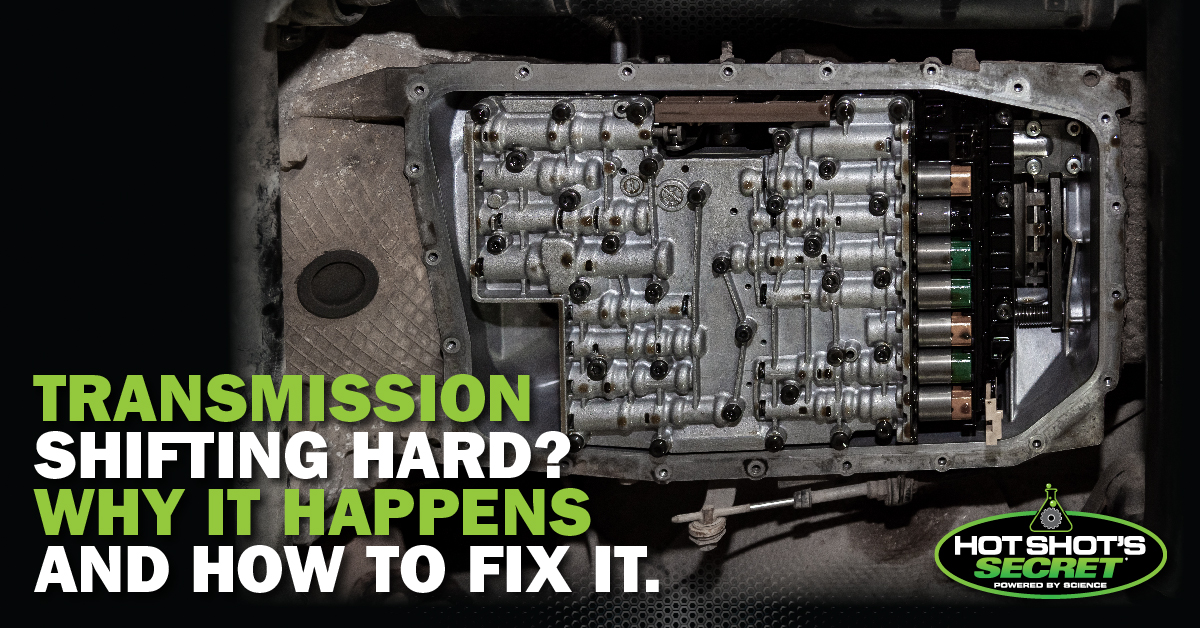
The transmission sets your car’s speed by powering the wheels. Shifting from one gear to the next should be a seamless experience. If your car has a hard-shifting, slipping or jerking transmission, it might be a sign that your transmission needs immediate repairs.
Hard shifting is bad for transmission because the underlying problems can eventually make your car stop working, leading to expensive repairs. Learn about the causes for a car shifting hard and what you can do to get your transmission back to top-notch condition.
Why Does My Transmission Shift Hard?
A slipping, rough or delayed transmission indicates it needs repairs. Here are the symptoms of common transmission problems:
Slipping Transmission
A slipping transmission means the transmission slips into the next gear instead of gliding smoothly. A slipping transmission problem can present itself in these ways:
- The check engine light is on.
- You hear strange sounds when you shift.
- It smells like something is burning.
- There’s an interruption in acceleration.
- The revolutions per minute (RPM) are extremely high.
- You have difficulty shifting gears.
- There’s a delay or failure to go into reverse.
The causes of slipping transmission include:
- Worn-out transmission bands and gears: Gears can wear out or not fit together correctly. The transmission bands linked to these gears in automatic transmissions wear down and break, requiring replacement. Issues with the gears or bands can cause the transmission to slip.
- A failed solenoid: The solenoid controls the transmission’s fluid flow. When this electro-hydraulic valve is damaged or fails, too much or too little fluid is released into the transmission, so it doesn’t work right.
- Low or burnt transmission fluid: When the transmission fluid is low, the system can overheat, and there’s not enough hydraulic pressure present to engage the gears. Fluid loss is caused by a leak. Burnt fluid happens when the transmission is overheated or poorly maintained. It smells like burnt toast, and the liquid itself looks burnt.
- Torque converter difficulties: The torque converter converts the engine power into torque for the transmission to work. If the converters are worn down, fluid can’t flow to the transmission, causing slipping.
- A faulty clutch: Clutches in the transmission help change gears. In automatic transmissions, the clutches are supposed to lock up at high speeds to prevent slipping. A lack of transmission fluid can cause the clutches to malfunction.
Rough or Jerking Transmission
A rough or jerky transmission feels like a thud or clunk when your car tries to shift into the next gear. You may have a jerking transmission if you have trouble accelerating or changing gears, and shifting from one gear to the next isn’t smooth. A rough transmission is caused by:
- Low or poor-quality transmission fluid: Not enough or contaminated fluid can make the shifting conditions difficult. Poor or low transmission fluid cannot adequately lubricate the transmission, causing problems.
- A faulty sensor: Some vehicle sensors influence the transmission’s shifting abilities. The sensors can receive wrong information about speed and more from the engine. If the sensors aren’t working right or receive incorrect information, the transmission can shift roughly.
- Vacuum modulator valve issues: Older vehicles have a vacuum modulator valve to help the transmission know when to shift. A detached, blocked or bent vacuum hose changes the transmission’s pressure, leading to a rough shift.
Delayed Engagement of the Gear Shift
A delayed engagement — or delayed gear shift — is when there is a pause of a few seconds to a minute between shifting from park into drive or reverse. A delayed gear shift can be caused by:
- Failed transmission solenoids.
- Poor transmission fluid maintenance.
- Low transmission fluid.
- Cold weather.
How to Stop Your Car From Shifting Hard
Here are some things you can check to get your transmission back on track:
- Check your fluid level: Since low transmission fluid can cause problems, see if your fluid level is low. If so, figure out what’s causing the leak and make repairs.
- Inspect your transmission fluid: Look at your transmission fluid to make sure it’s high quality. It should look clean, have a light red color and be a bit transparent.
- Flush your transmission fluid: Flush the transmission fluid every 30,000 to 50,000 miles for optimal performance. You should also flush it if the fluid is wrong for your car or contaminated.
- Switch to a synthetic transmission fluid: During cold weather, transmission fluids with poor cold-flow qualities can thicken and cause problems. Using a high-quality synthetic transmission fluid can help because it doesn’t have waxes, so it’ll stay fluid at low temperatures.
Switch to Hot Shot’s Secret High-Quality Transmission Fluid
Hot Shot’s Secret has created many transmission fluid products to resolve common transmission problems. Our transmission fluid will stop your car from shifting hard — or your money back! Shop our transmission fluids or contact us online or at 800-341-6516 to learn more.
